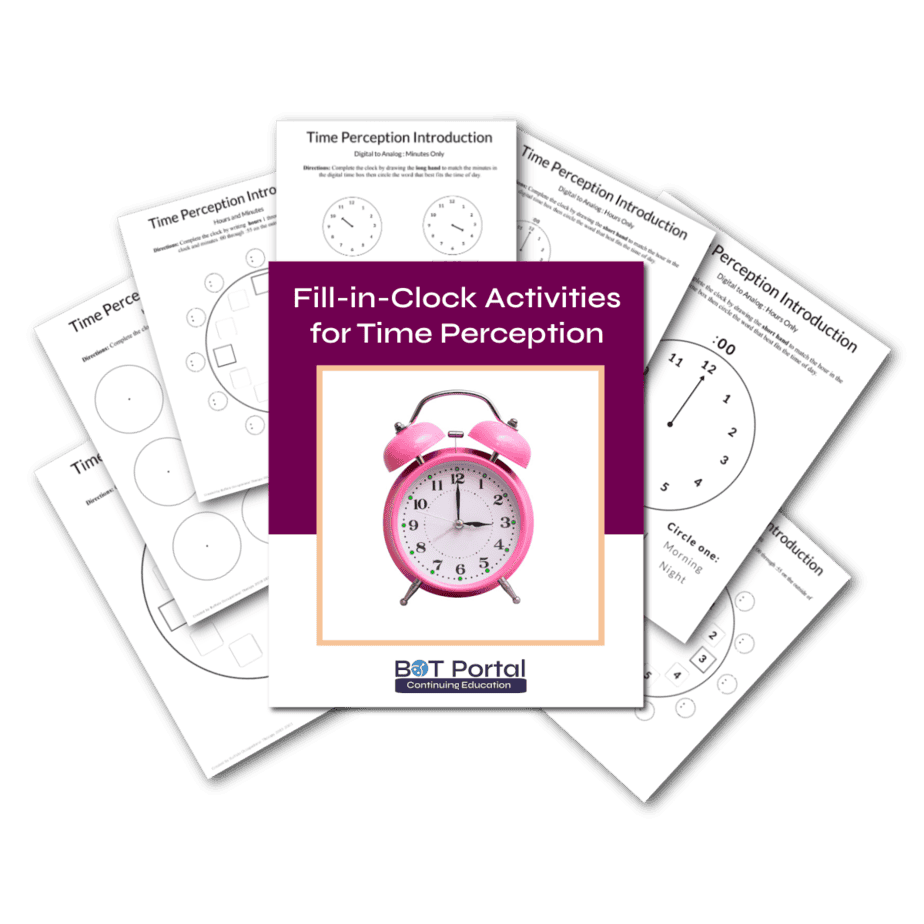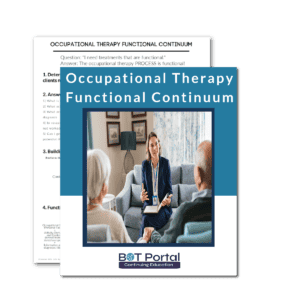Description
‘Fill-in the Time’ Patient Worksheets
Fill-in Clock Time Perception Activity Packet – Occupation Resource
This set includes of fill-in the time worksheets provide a continuum of training that includes simple fill-in-the blanks to problem-solving ‘digital to analog’ and ‘analog to digital’ skill level! All you need to do is print it, laminate it, and just like that you have a fantastic tool to help your adult patient remediate or preserve their abstract reasoning, spatial relation skills, and critical executive functions. If you are a practitioner that frequents the SLUMS cognitive assessment, these worksheets are a great addition to your Occupational Therapy Toolkit!
Why Occupational Therapy Focuses on Clock Skills
Occupational therapy (OT) often includes cognitive remedial skills training that centers around clocks and time-related tasks for several key reasons:
- Complex Cognitive Processing:
- Clock Reading and Time Management: These activities require integration of various cognitive functions, including visual perception, spatial reasoning, attention, memory, and executive functioning. Reading a clock involves understanding numbers, interpreting spatial positions, and linking these to the concept of time.
- Analog and Digital Conversions: Converting between analog and digital clocks enhances cognitive flexibility, as it requires understanding and switching between different representations of the same concept.
- Everyday Relevance:
- Practical Application: Time management is a crucial skill for daily life. Being able to read clocks and manage time affects a person’s ability to follow schedules, meet deadlines, and maintain routines, all of which are critical for occupational performance.
- Daily Routines: Many activities of daily living (ADLs) and instrumental activities of daily living (IADLs) are time-bound. Accurate time perception and management ensure effective participation in self-care, work, leisure, and social activities.
The Clock Test and Activities
- Clock Drawing Test:
- Assessment Tool: The Clock Drawing Test (CDT) is a widely used cognitive screening tool that assesses several cognitive domains, such as visuospatial abilities, executive function, attention, and abstract thinking.
- Diagnostic Value: The test can help identify cognitive impairments related to conditions such as dementia, stroke, and traumatic brain injury.
- Fill-in-the-Blank Clock Worksheets:
- Skill Reinforcement: These worksheets help reinforce knowledge of clock faces, time reading, and spatial placement of numbers.
- Error Detection and Correction: Filling in missing components helps individuals practice error detection and correction, promoting cognitive engagement and problem-solving.
- Analog to Digital and Digital to Analog Conversions:
- Cognitive Flexibility: Converting between clock formats requires mental flexibility and understanding of different time representations, enhancing cognitive agility.
- Numeracy Skills: These activities improve numerical understanding and calculation skills, which are essential for various daily tasks beyond just time management.
Impact on Time Orientation and Occupational Performance
- Time Orientation:
- Temporal Awareness: Accurate clock reading and time conversions enhance an individual’s awareness of time, which is crucial for temporal orientation.
- Routine Adherence: Understanding and managing time helps individuals adhere to daily routines and schedules, promoting structure and consistency in daily life.
- Occupational Performance:
- Enhanced Independence: Improved time management skills contribute to greater independence in ADLs and IADLs. Individuals can better manage personal care, household tasks, and community activities.
- Productivity and Efficiency: Effective time management leads to increased productivity and efficiency in various occupational roles, including work, education, and leisure activities.
- Social Participation: Accurate time orientation supports social engagement by enabling individuals to keep appointments, attend social gatherings, and participate in group activities.
What’s included?
- 13 unique clock activities sheets for any age (depicted in image)




